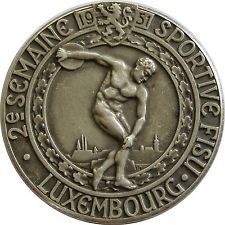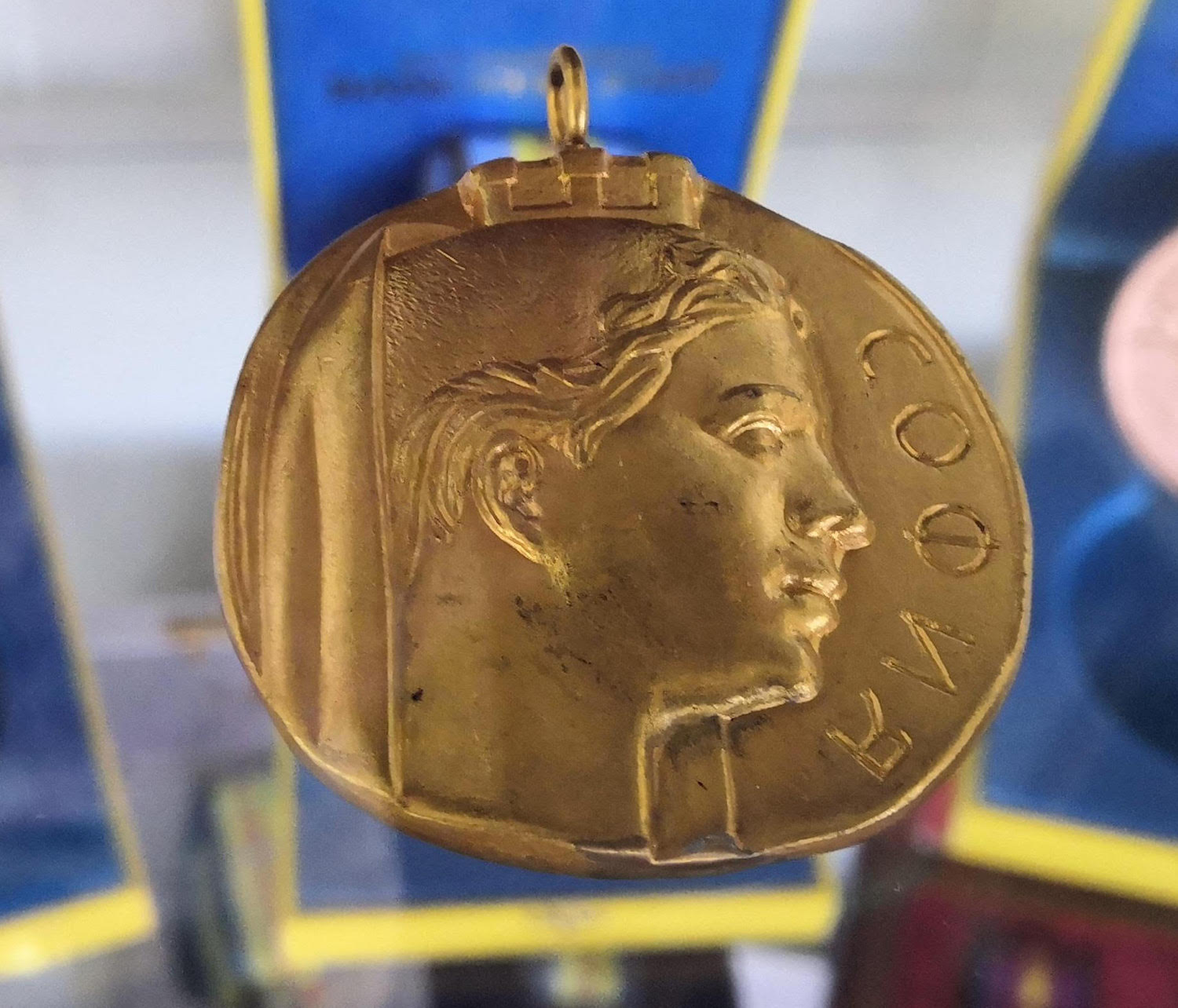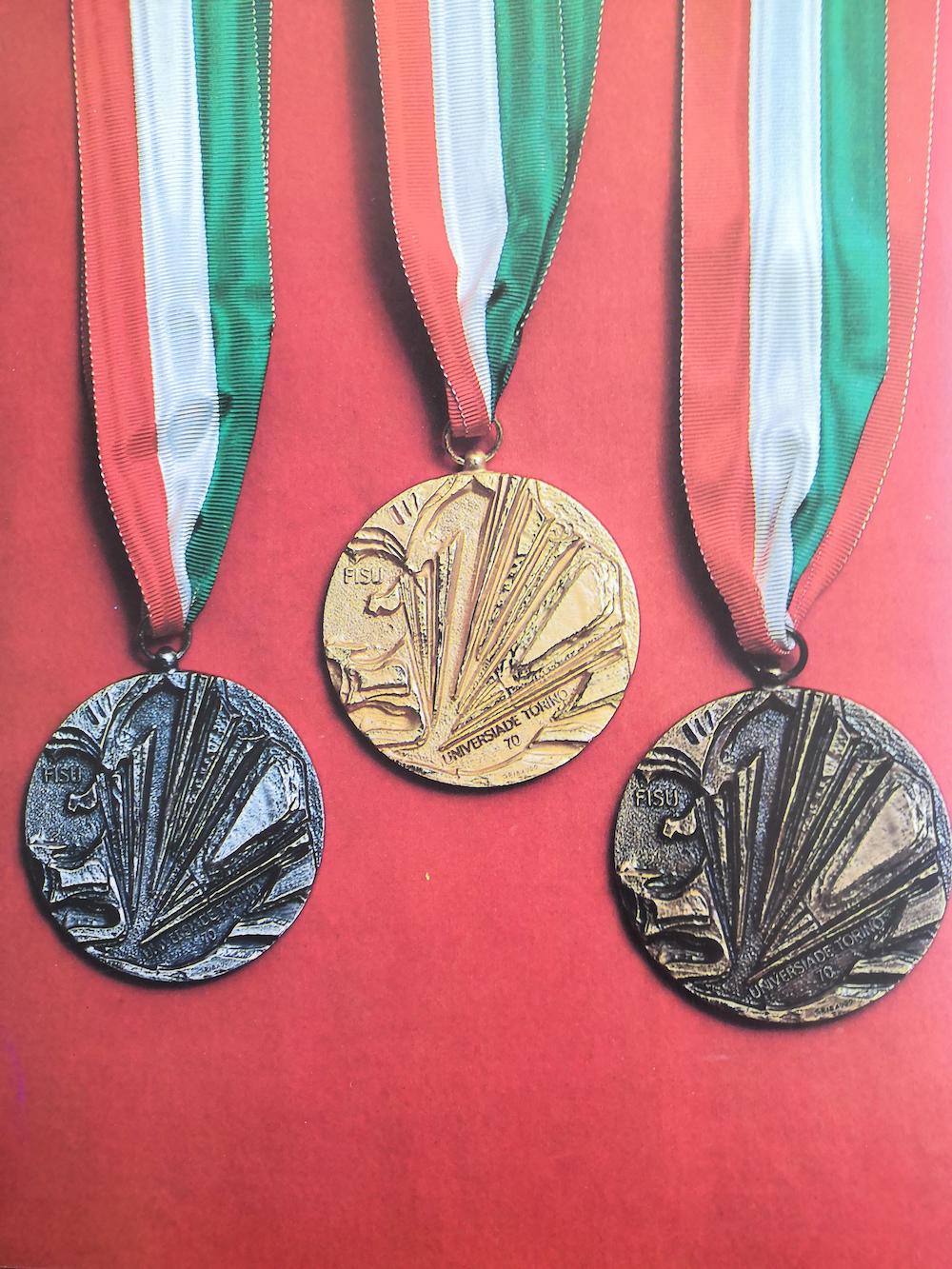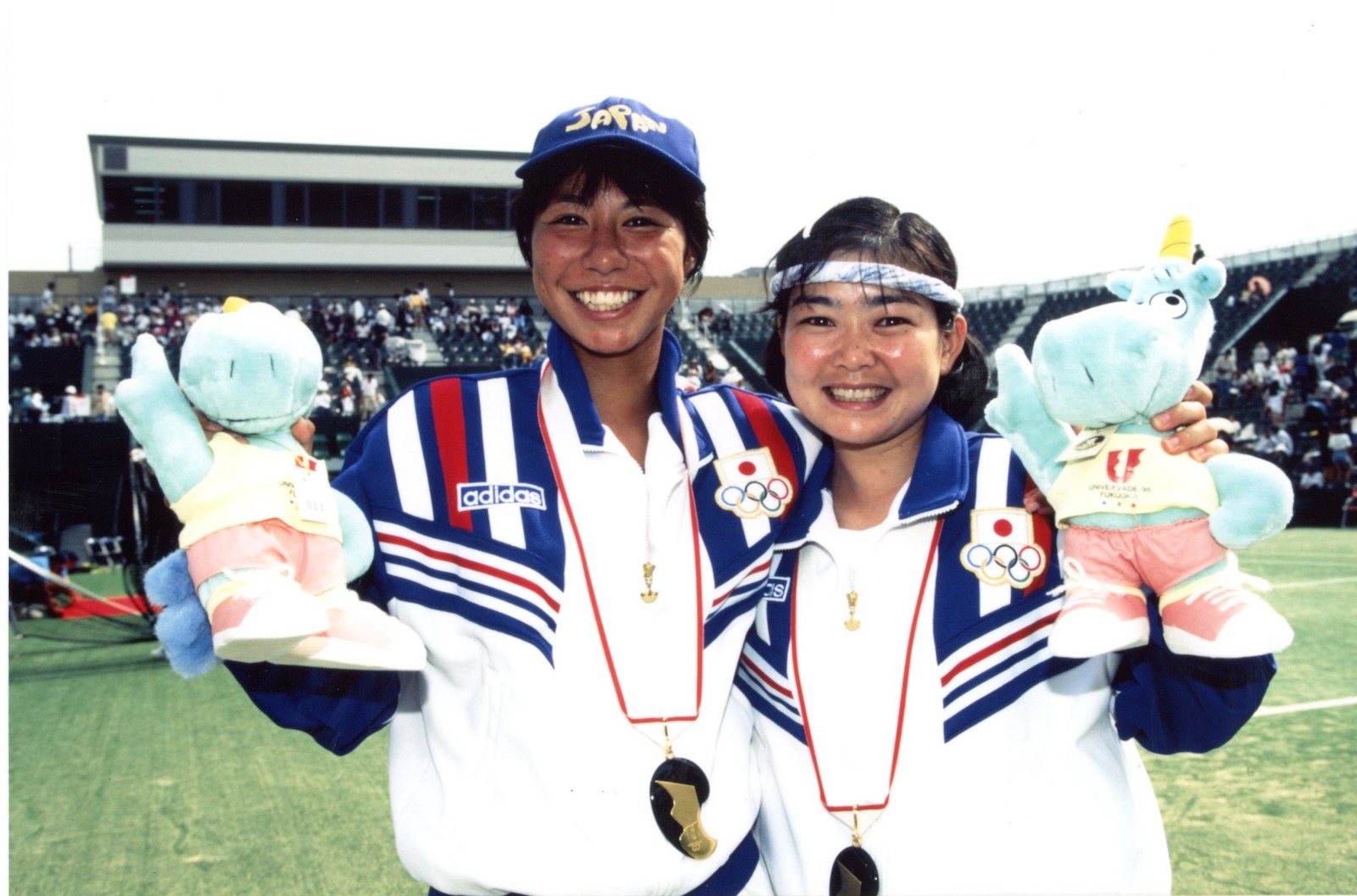More than one ton of aluminium and at least 420 grams of pure gold – this is just a part of what was needed to make the 76 sets of medals for the Krasnoyarsk 2019 Winter Universiade. According to the organisers, it took four working days to make each medal. But how many sleepless nights did it take to design before the happy winners could finally bite into them in front of millions of spectators?
 The ‘discobolus’ on display from the 1951 International University Sports Weeks in LuxembourgSince the conception of the Universiade, now known as the World University Games, creating a memorable set of medals has been a challenge for each event organiser. For example: how do you combine the ‘U-symbol’ with the logo of the Games, without forgetting to make it unique despite having just a few centimetres of precious metal to work on? To find out, we took a deep dive into World University Games history and found some interesting examples.
The ‘discobolus’ on display from the 1951 International University Sports Weeks in LuxembourgSince the conception of the Universiade, now known as the World University Games, creating a memorable set of medals has been a challenge for each event organiser. For example: how do you combine the ‘U-symbol’ with the logo of the Games, without forgetting to make it unique despite having just a few centimetres of precious metal to work on? To find out, we took a deep dive into World University Games history and found some interesting examples.
From the World University Games in the early twenties and at their 1947 revival, the image of Discobolus – the figure of a youthful ancient Greek athlete winding up to throw the discus – remained the dominating motif of the medal. When FISU ran its International University Sports Weeks from 1949 to 1957, a rendering of Discobolus was etched into the medal.
 With the birth of Universiade in 1959, the medal began to transform into a genuine piece of art―famous artists and sculptors were often invited to produce this unique sports symbol.
With the birth of Universiade in 1959, the medal began to transform into a genuine piece of art―famous artists and sculptors were often invited to produce this unique sports symbol.
This trend accelerated during second Summer Universiade in 1961 with the Bulgarian sculptor Lubene Dimitrov proposing quite an original form of the medal. Using ancient Roman coins from the 2nd century as the prototype, Dimitrov’s design payed homage to the patroness of Sofia, the goddess Serdika.
 At the return of the Summer Universiade to Turin in 1970, artists Ezio Gribuaudo and Antonio Donat-Cattin designed the medal (left), while in 1985 in Belluno, this task was entrusted to famous Italian sculptor Carlo Balljana di Sernaglia della Battaglia. The medal depicted a young jumper on the front with a capital ‘U’ surrounded by five stars and ‘Universiade 85’ on the flip side.
At the return of the Summer Universiade to Turin in 1970, artists Ezio Gribuaudo and Antonio Donat-Cattin designed the medal (left), while in 1985 in Belluno, this task was entrusted to famous Italian sculptor Carlo Balljana di Sernaglia della Battaglia. The medal depicted a young jumper on the front with a capital ‘U’ surrounded by five stars and ‘Universiade 85’ on the flip side.
Together with Italy and Bulgaria, Japan stands on the pedestal of countries having most often hosted the Universiade. At its debut in Tokyo in 1967, the land of the rising sun aimed to emphasise the real student character of the event.
Two students from the Tokyo University of Arts designed the Summer Universiade’s sixth medal set. The gold, silver and bronze plated medals hung on a four-coloured braid that represented both, the four seasons and the various climates of the participating countries. Japanese creativity found even greater expression in Fukuoka in 1995.

The Organising Committee of the Olympic Games in Tokyo recently announced its decision to make the medals from recycled mobile phones. And the Organising Committee of Lucerne 2021 also recently revealed their medals – in true Swiss style, the inspiration comes from cow bells.